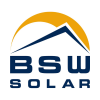Solar fence FAQ
The original solar fence from Next2Sun
Known from









Frequently asked questions
Investing in a PV system is not an everyday decision. Additionally, our Next2Sun Solar Fence concept differs significantly from the traditional implementations with horizontally or inclined PV modules.
That’s why we have compiled some frequently asked questions for you here.
In the FAQ, you will find information about the Solar Fence concept, its benefits, and general topics related to the technology, construction, and installation.
If you do not find your question answered here, please do not hesitate to contact one of our Solar Fence partners. You are also welcome to contact us directly. At the bottom of this page, you will find links to our partners as well as our contact form.
Search for topics/terms
The Next2Sun solar fence concept
- What is the solar fence
- Areas of application and use
- Structure & difference to conventional South PVAs
- Efficiency compared to traditional, south-facing PV systems
- Technical and power production topics
- Structural framework conditions
A bifacial solar fence represents a particular way of putting photovoltaic systems to dual use: as well as generating electricity, the bifacial solar fence can also be used to fence in land and buildings.
The bifacial solar fence can be used around homes, at commercial or industrial premises or in farming. It offers an interesting alternative in the field of private power generation, but also a potential complement to rooftop installations, solar car ports and so on. Different frame and foundation options have been developed for various areas of application: a high-quality square version developed especially for the end-customer sector, and a version for agriculture optimised for efficient installation and use of materials. The foundations can be wall-mounted, involve installation via concrete footings, or be built on piled steel profiles. Depending on the area of application, versions with one module row (height approx. 1.2-1.6 metres) or two module rows (height > 2 metres) can be used.
The bifacial solar fence transfers the benefits of the Next2Sun agriPV concept into private power generation. Firstly, the vertical alignment of the bifacial solar fence means that hardly any area is overbuilt, and secondly, the choice and combination of suitable fence sections allows for a generation profile optimised to personal use. The bifacial solar fence is thus an interesting alternative to a rooftop installation or a solar carport.
In general, property enclosures up to a certain height (typically between 1.6 and 2 metres) do not require permission – however, these regulations may vary depending on the federal state and municipality or district. You should therefore ask the responsible building authority.
Solar fences are generally viewed as other building structures and thus remuneration is paid under section 48 para. 1 of the German Renewable Energies Act (EEG), like a ground-mounted system would be.
Cables are laid inside the profile wherever possible. For premium posts, the cable is even better protected within the square posts of the structure, and the amount of exposed cable is minimal. Cable protection conduits can be overlaid as an option for better UV protection and weather resistance.
In principle, the use of power optimisers can of course also be implemented in the solar fence, as with any PV system. With regard to the dimensions of the optimisers, it is advantageous to use components that can be mounted inside the premium solar fence post for optical reasons. The optimiser can also be installed inside the post of the standard solar fence.
There is not yet any standard product for optimisers, but a bracket to hold a micro-inverter beneath the bottom module is currently being worked on. This will of course only work with posts that are a distance from the ground, but would also be suitable for mounting optimisers.
Gates are not currently on our list. However, there will definitely be market solutions that fit visually with our square posts.
Premium posts are currently only available as a wall-mounted system. Setting in concrete is also available as a custom design.
The figure of > 90% relates to the efficiency of the back compared to the front. In an east-west orientation both sides receive an essentially symmetrical amount of sunlight in morning and evening, as well as some indirect sunlight (reflection). On the back of the modules, if sun levels are identical the yield is just over 90% of the front, due to the module’s technical design.
Yes, a vertical fence with a southern orientation produces only around 5% lower electricity yield than an east-west orientation (if neither are shaded).
In general, crystalline bifacial glass-glass modules with a high level of efficiency are used. Bifacial modules are characterised by the fact that both sides have a glass surface, so can both generate electricity.
At the moment, bifacial n-type glass-glass modules with an output of approximately 400 watts and efficiency of around 20% are generally used. For the vertical bifacial concept from Next2Sun GmbH, as well as front side efficiency, bifaciality (back side efficiency) is key. Here, the n-type glass-glass modules used with a back side efficiency of more than 90% offer a very good level. The upcoming technological change to heterojunction cells is likely to bring further improvements in terms of module efficiency and bifaciality.
The vertical module rows, with row spacing of at least 8 metres in the agriPV system, enable the entire space to be grazed as well as ensuring that work with agricultural machinery can be conducted without issue across more than 90% of the area.
The modules’ east-west orientation also produces two generation peaks during the day, in the morning and evening. This complements conventional south-facing systems, keeping the power grid from being overloaded and helping ensure a consistent supply of green energy throughout the day.
The vertical orientation makes it difficult for soiling to be deposited and has a self-cleaning effect when it rains – a key advantage over a conventional system. The soiling level is of course heavily dependent on the type and scope of dual use. With grassland farming, numerous years of experience show that the modules do not need to be cleaned.
The bifacial solar fence is based on the technology from the Next2Sun Agri-PV system and uses it for private energy generation. Where relevant and useful, the same components are used, enabling significant procurement synergies and thus keeping the costs of the solar fence down.
Your energy independence starts here!
Achieve up to 10 % higher electricity yields per installed kW compared to conventional rooftop systems
Electricity yield
- Yield comparison and daily variation
- Yield per hectare
- Weather dependency and seasons
- Customers and remuneration

